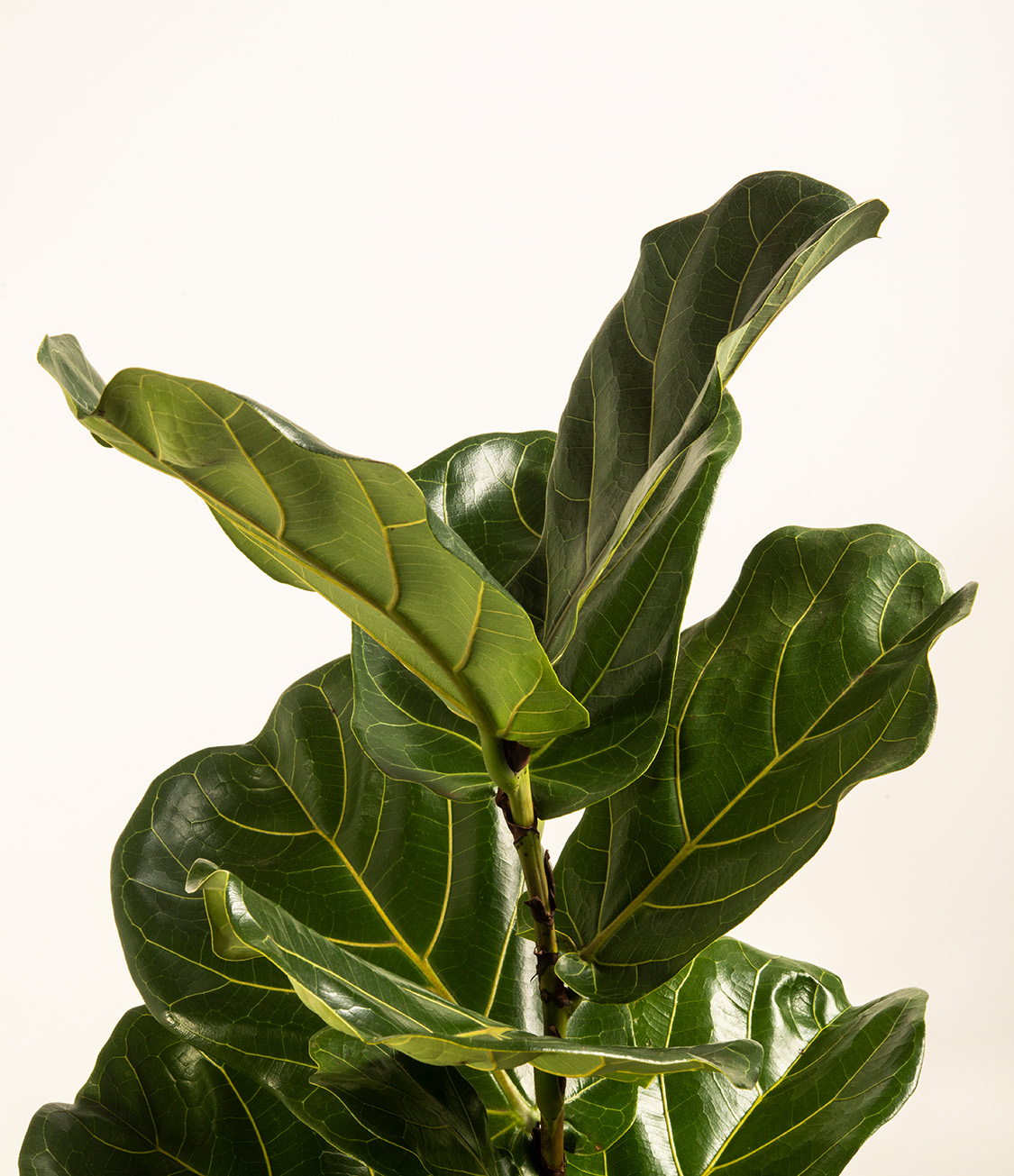How to care for Fiddle Leaf Fig
Shop this plantAbout Fiddle Leaf Fig
Native to the rainforests of Western and Central Africa, the Fiddle Leaf Fig is a tropical tree that grows to impressive heights in the wild and is one of the most popular and sought-after houseplants. Its striking green foliage, with large, lyre-shaped leaves, brings a bold and welcoming feel to any space.
Other common names
- Banjo Fig
- Ficus Lyrata
- Broadleaf Fig
- Green Fig
How Often Should I Water My Fiddle Leaf Fig?
With easyplant’s self-watering system, caring for your Fiddle Leaf Fig is effortless. Simply check the easyplant reservoir once a month and top it up when it’s empty!
Fiddle Leaf Fig Light Needs
Fiddle Leaf Figs thrive in bright, indirect light, where sunlight is diffused. They can also adapt to bright, direct light, where the sun shines directly into the space. However, avoid placing them in low-light areas or rooms without natural light.
Fiddle Leaf Fig Plant Care
During its first few days at home, your Fiddle Leaf Fig may drop a few leaves. You can either let them fall naturally or trim them off. There’s no need to worry, as new leaves will soon take their place. To help it settle in, avoid moving the pot too often and allow the plant to adjust to a stable environment.
To encourage even growth, occasionally dust the leaves and rotate the pot by a quarter turn once a month. If you’d like to maintain a particular shape or height, you can prune it as needed.
How Big Do Fiddle Leaf Figs Grow?
The Fiddle Leaf Fig grows slowly and steadily, gaining several centimeters each year and potentially living for decades. As it matures, it’s normal for it to shed a couple of lower leaves to make way for new growth at the top.
Temperature & Humidity
Fiddle Leaf Figs prefer temperatures between 16°C and 29°C, similar to their natural tropical habitat. The key to keeping them happy is avoiding sudden temperature changes so keep them away from draughts, or radiators.
Like most tropical plants, they thrive in moderate to high humidity levels, ideally between 30% and 60%. If the air in your home is dry, you can place your plant near other houseplants to create a more humid microclimate.
Are Fiddle Leaf Figs Toxic to Pets & Children?
Fiddle Leaf Figs can be mildly toxic if ingested, so it’s best to keep them out of reach of young children and pets. If a cat or dog nibbles on the leaves, it may cause irritation in their mouth, throat, or stomach. Pet owners who still want to keep a Fiddle Leaf Fig should consider placing it in a room that their pets can’t access.
Troubleshooting Common Problems with Fiddle Leaf Figs
Allow your Fiddle Leaf Fig a two-week adjustment period to acclimate to its new environment. If you notice the leaves becoming droopy or developing brown spots, try moving the pot to a brighter location with more indirect light. If the leaves are becoming crispy or curling, it could be due to too much direct sunlight, so relocating the plant to a spot with less intense light will help it thrive.
Frequently Asked Questions about Fiddle Leaf Fig Plant
- Do fiddle leaf figs need direct sunlight to grow?
Fiddle Leaf Figs should be kept out of harsh, direct sunlight, as it can scorch the leaves. They grow best in bright, indirect light, which you can create by using sheer curtains to diffuse sunlight.
- Should I mist my fiddle leaf fig?
Rather than misting, which provides only temporary moisture, it’s better to maintain humidity levels by grouping plants together or placing a pebble tray with water near the plant.
- Are fiddle leaf figs difficult to take care of?
Fiddle Leaf Figs aren’t the easiest plants for beginners, as they require careful watering and the right humidity levels. Because they grow quickly, they may need repotting and pruning every year. However, with the right care, they reward you with stunning, lush foliage that makes a real statement.
- Will a fiddle leaf fig grow fruit?
Indoors, Fiddle Leaf Figs rarely produce fruit, as they require specific conditions to do so. On rare occasions, small fruits may appear, but they are not particularly tasty. While they aren’t toxic, they aren’t recommended for consumption.





